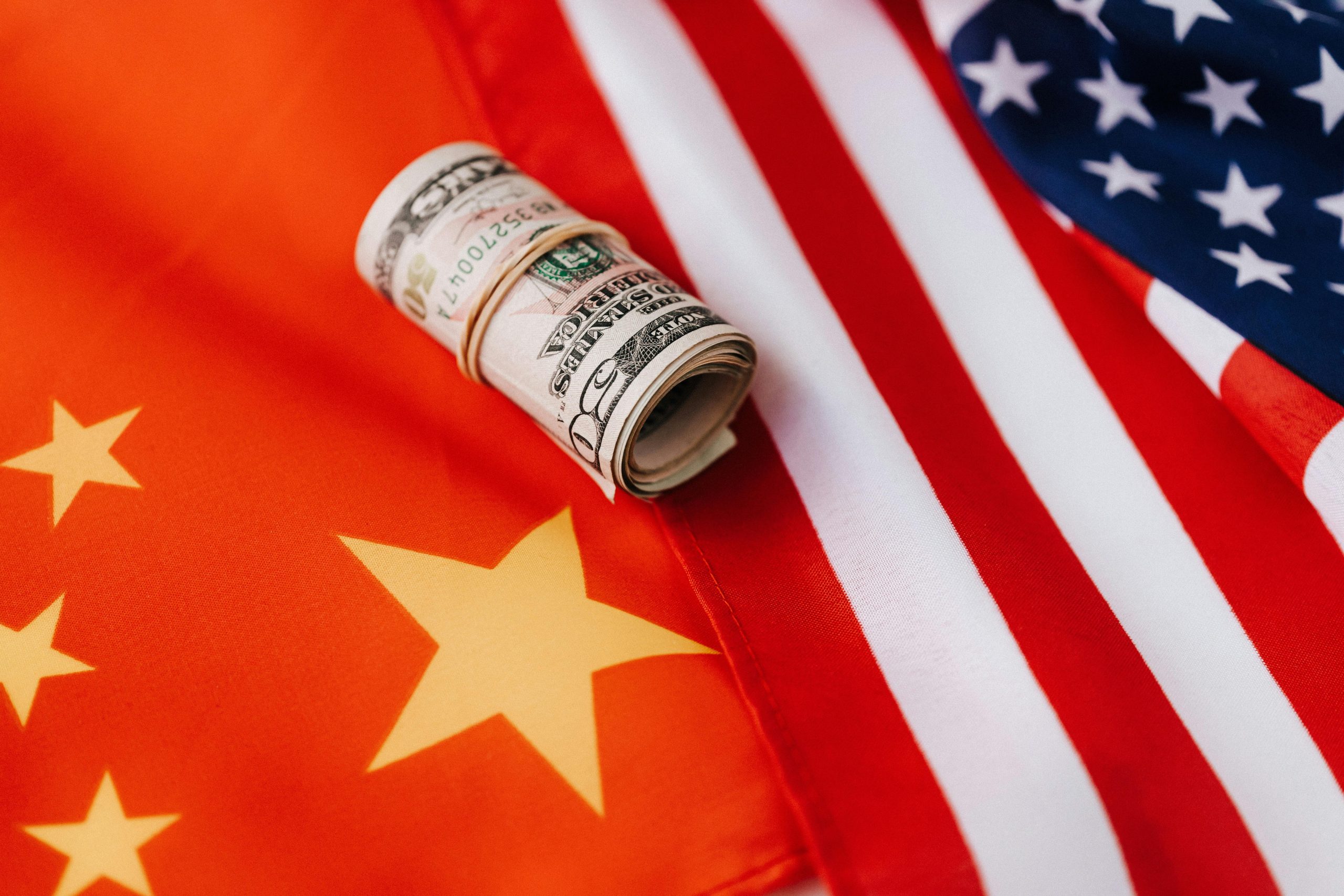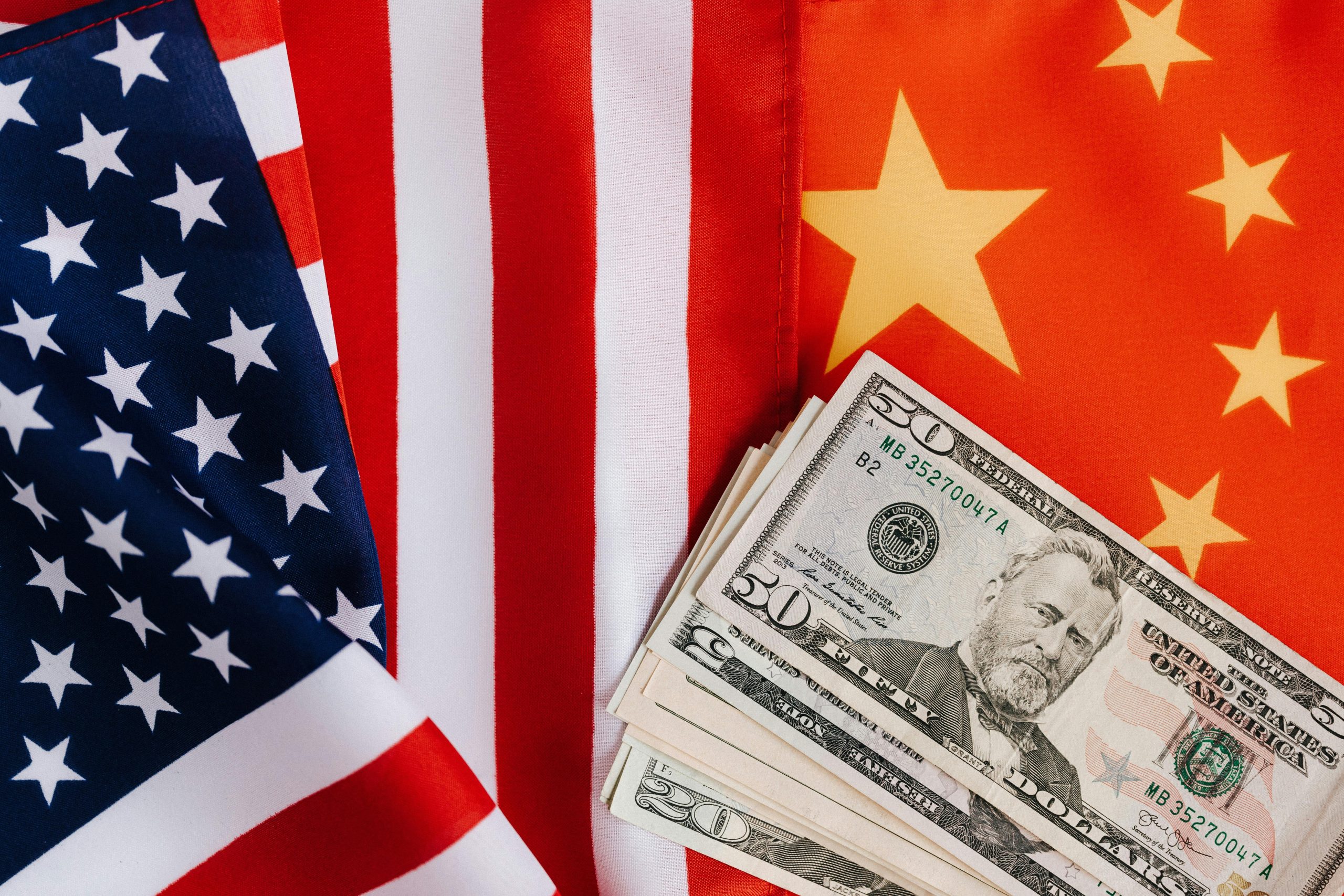Picture the quiet tension rising between Washington and Beijing. News cycles catch flashpoints and statements, but the real struggles brew under the surface. Here, trade restrictions don’t just punish or guard. They entwine systems, intentions, and risk in ways most people never see.
Export controls from both sides reach across the Pacific, binding industries together in a tight, reactive dance. This is export control symbiosis, hidden in plain sight, quietly shaping the future. Each move by one government invites a counter-move, creating tighter knots in global supply chains.
These pressures don’t just touch factories and shipping routes. They can ripple through economies, unsettle markets, and weaken trust between partners. As tensions edge higher, the unseen risks grow sharper—quiet but real, and more urgent than ever.
Export Controls: The Unseen Borderlines of Power

Photo by Markus Winkler
Behind doors in government halls and business boardrooms, export controls shape what can cross borders and who can buy. They’re like invisible fences. Every country uses them a bit differently, but the U.S. and China have turned these rules into silent weapons. Instead of soldiers at a border, there are pages of rules and new layers of risk, straining old global ties.
What Are Export Controls in Plain Terms?
Export controls are rules that decide what kinds of products, technology, and information can leave a country. Think of them as a giant stop sign for anything a government wants to keep close—like advanced computer chips or detailed blueprints for engines.
Some products seem harmless, like metals or special equipment, but can become a problem if used to build missiles or tools for hacking. This is why governments don’t just control weapons. They add everyday tech, rare earth minerals, and even certain software to long and detailed lists.
The American Approach: Guard Rails on High-Tech
The U.S. has set up some of the world’s strictest rules for exports—especially for anything high-tech. The goal is clear: protect national security, support U.S. factories and ideas, and keep risky tech out of the wrong hands.
Here’s how the U.S. uses export controls:
- Controls on Advanced Microchips: American chipmakers, like NVIDIA, have limits on selling advanced processors to Chinese buyers. The rules don’t just stop at U.S. borders. If a chip uses U.S. tech, restrictions often follow it overseas.
- Limits on Dual-Use Items: If a product can be used for both peaceful and military tasks (like drone parts or encryption software), it’s flagged and watched.
- Blacklist System: Companies like Huawei end up on the “Entity List,” which blocks them from buying from American businesses unless they get special permission.
- Broad Reach: Even laptop shipments and medical gear can require checks and approvals.
These rules create real headaches for U.S. companies. They lose access to huge overseas markets. Some have had to split up their supply chains or give up on specific deals.
The PRC’s Countermoves: Shields and Leverage
China does not stand by. The Chinese government crafts its own lists and restrictions. If Washington uses export rules as a shield, Beijing uses them as a counterweight and a pressure point.
China’s main export control tactics include:
- Rare Earth Minerals: China controls most of the world’s supply of rare earths, crucial for building electronics, wind turbines, and military equipment. By cutting or threatening to cut these exports, China can squeeze other countries that depend on these resources.
- Unreliable Entity List: This list targets foreign companies viewed as threats to China’s national interests. It works as both punishment and warning.
- Tech and Data Restrictions: Beijing also restricts exports of some data tools, aerospace technology, and quantum computing know-how.
For example, when Japan announced new chip equipment controls in 2023, China threatened key material exports back. A move from one side quickly snowballs into countermoves, each ratcheting pressure higher.
Real-World Ripples: More Than Numbers on a Spreadsheet
Export controls don’t only hit spreadsheets or boardroom slides—they land in factories and daily life.
- Smartphone Makers: U.S. bans on advanced chips forced Huawei to redesign phones without the newest 5G.
- Automotive Industry: Restrictions on Chinese battery tech slowed expansion plans for U.S. carmakers aiming to build more electric cars.
- Healthcare: Even medical research and drug development can face delays if lab equipment is flagged.
Each new rule can set off a global race to find gaps or new suppliers, driving up costs and shrinking trust.
In this way, export controls work like invisible borders. They don’t always spark headlines, but shape which ideas, tools, and products reach the world. As tensions between the U.S. and China tighten, these rules quietly redraw the world’s economic maps.
How Tensions Feed Symbiosis: The U.S. and PRC Lockstep
Picture the careful dance between the U.S. and China, where every step leaves a mark on the next. For every new export rule from one side, there’s an answer from the other. What starts as a bit of friction soon locks both countries into a tight circle of reaction and counter-reaction. This is not just tit-for-tat—it’s policy woven together, creating a pattern bigger than either side imagined.
Technology at the Heart of the Battlefield

Photo by Google DeepMind
The sharpest edge of this rivalry cuts through technology. Both Washington and Beijing treat chips, artificial intelligence, and rare raw materials like the keys to tomorrow’s power. Semiconductors form the “brains” of everything from basic appliances to advanced weapons. Whoever controls these chips gets to shape entire industries.
Now add artificial intelligence, the fuel for smarter software, satellites, and even modern battlefield decision-making. Both sides race to keep the newest AI tools out of rival hands. The U.S. places limits on advanced processors, worried about military use. China then puts restrictions on exports of rare materials like gallium and germanium, metals needed for those same chips.
The tug-of-war touches more than chips and code:
- Semiconductors: Export bans on high-end chips stall China’s tech plans, but push Beijing to double down on homegrown chip labs.
- AI Tools: Each time the U.S. curbs AI software exports, China narrows access to cloud providers or data needed to train AI models.
- Key Minerals: China limits exports of rare earths or battery metals. In response, the U.S. tries to open new mines or court other suppliers.
Both sides fear one move behind could mean falling far behind. The echo is clear—each block sets off a scramble to circle wagons, find new sources, and build at home, all while keeping a wary eye on the next bold move.
Echoes Through Supply Chains
When two giants pull and push this hard, the knots show up deep in global supply chains. Tangles start small—an export ban here, a new license requirement there—and then ripple outward, doubling the trouble.
Consider these real stories:
- A Dutch chip machine ban: After U.S. pressure, the Netherlands restricted exports of deep ultraviolet (DUV) lithography tools, blocking China’s top chipmakers from upgrading their factories. Chinese firms rushed to buy up existing machines, quietly inflating prices across the world.
- Battery minerals on the table: In 2023, China curbed exports of graphite, a mineral needed for electric car batteries. Automakers in Europe and the U.S. scrambled for new partners. Some started hoarding, others signed long-term deals in Africa. Delays hit car plants and new models got pushed back.
- Critical minerals from Australia: To sidestep China, U.S. buyers started looking abroad for rare earths. This caused a flood of investment into Australian mining startups. Some projects boomed, others failed, all while global prices swung with each new export headline.
Every time controls shift, suppliers and buyers race to adapt.
- Factories reroute orders overnight.
- Shipping schedules flip with new paperwork and checks.
- Multinational companies split product lines or quietly redesign gadgets.
This constant back-and-forth doesn’t loosen ties. Instead, it binds the U.S. and China even tighter, each one forced to watch for the next rule change. The policies are supposed to make each country stronger, but the result is more interlocked risk—each side now more exposed than either expected.
Unexpected Risks: From Boardroom to Main Street

Photo by Kaboompics.com
Powerful export controls redraw the map for everyone tied to U.S.-China trade, no matter where they stand. Boardroom decisions now carry more weight, and ripple out to cash registers and kitchen tables across the world. The shockwaves of every new policy leave few untouched, showing how policies built for security and strategy can quietly kickstart real hardship for people who never signed up for the fight.
Corporate Decisions Under Pressure: Share how leaders must rethink where and how they do business. Illustrate with anecdotes about sudden market exits, stranded investments, and scrapped deals.
Corporate leaders sense the ground shifting under their feet. One quick change in export rules, and a whole year of planning can unravel overnight. Investments that once looked safe become stranded. Partnerships built on handshakes and long flights find themselves on shaky ground.
Consider the story of a Texas-based industrial design company. They spent years building out a joint venture in southern China, sinking millions into modern facilities. With the tightening of export rules, their advanced manufacturing tools found themselves caught on a restricted list. Overnight, they couldn’t ship key equipment, and the plant sat unfinished and silent. Layoffs followed, and so did a loss no insurance could fix.
Deals also fall through mid-stream. A chip company from California was deep into negotiations with a Chinese automotive manufacturer to supply cutting-edge sensors. As the ink on the first contracts dried, new U.S. controls rolled out, halting the export of those sensors without hope for quick approvals. Both sides walked away frustrated, resources wasted, relationships strained.
Corporate boardrooms now run through extra checklists:
- Can we keep selling to our biggest markets?
- What if our supply chain gets interrupted tomorrow?
- Should we move operations, invest elsewhere, or just wait this out?
Every move starts to feel like a gamble, and sometimes companies must leave profitable markets behind. The risk isn’t just about balance sheets; it’s about the daily reality for executives who wake up to find yesterday’s playbook out of date.
Everyday Impacts for People: Describe how ordinary people feel the pinch—higher prices, fewer choices, less certainty.
All of this doesn’t stay trapped in corporate boardrooms. It leaks out, finding its way to Main Street and kitchen tables.
When export controls block parts or raw materials, the effects show up in prices. Ask any parent shopping for a new smartphone for their teenager. The latest model? Delayed. The price tag? Higher than last year. Components, once cheap and easy to order, now cost extra because they must take longer routes that avoid red tape. Or they aren’t available at all.
The ripple hits deeper. Car buyers face longer wait times and fewer choices, since automakers struggle to get enough batteries or microchips. Electric vehicles, once expected to become more affordable, now stretch family budgets thin.
It’s not just about stuff—it’s about how safe or steady life feels. Workers at shuttered factories see overtime disappear, while small business owners scan the news, bracing for sudden cost jumps or shipment delays. Certainty, always rare, now feels like a luxury.
People feel it in quiet frustrations:
- That laptop upgrade put off another year.
- A planned job at a new factory put on hold.
- Groceries creeping up in price because fertilizer components or packaged foods are stuck at customs.
Export controls may seem far away, but they shape daily routines in thousands of small and invisible ways. The rules are complex, but the result is simple—less choice, higher costs, and more questions without easy answers.
What Happens Next? Watching the Risks Grow
As each new rule lands, it’s easy to believe someone somewhere must be steering this story. But the cycle keeps spinning: new restrictions bring new checks and workarounds, then a fresh wave of countermoves. Escalating U.S.-China export controls don’t just create more rules—they breed deeper layers of risk. Each step forward knots global supply chains tighter and sharpens old rivalries. If the cycle continues, both sides could be racing toward a future where the problems multiply faster than answers.

Photo by Kaboompics.com
Risks That Refuse to Sit Still
Every extra layer of export control can make simple decisions tangled and slow. Some risks are easy to predict, like sudden price jumps or parts shortages. Others sneak up quietly, bringing bigger trouble over time.
Expect these risks to swell:
- Shadow supply chains: Companies may turn to less-transparent routes or untested middlemen, increasing the chance of scams or low-quality products.
- Retaliation on more fronts: If tit-for-tat rules keep growing, both sides might keep adding new products, industries, or companies to their control lists.
- Compliance confusion: More complex rules lead to mistakes. Small businesses, in particular, may stumble trying to follow shifting laws or face unexpected fines.
The cycle doesn’t just build one wall. Each new restriction acts as a brick, but together they form a maze—every turn risks catching the wrong person, the wrong business, or the wrong country.
Long-Term Trouble Brewing
If this pattern holds, everyone pays a price. Some risks might feel dull and drawn out, but they carve deep over time. A world split by export controls could look like:
- Permanent supply chain slowdowns
Factories no longer trust the old routes. Every order takes longer to fill. Delays become the norm, and costs sink in for good. - Fragmented technology standards
Products may end up designed for either the U.S. system or China’s—not both. Different standards can limit choice and make repairs harder everywhere. - Weaker global trust
As new rules pop up with little warning, businesses and governments could pull away from shared ventures. Suspicion hangs in the air, and deals feel risky. - National champions, global losers
Each country may grow its own champions, but with markets split, the rest of the world gets less choice and usually pays more. Inventions and new products may slow as creative energy funnels into workarounds instead of breakthroughs.
Why We Should Keep Watch
None of this is set in stone, but the risks aren’t fading. Every headline about fines, new blacklists, or shipping delays hints at a bigger picture forming. Trade rules that once stayed out of the spotlight now hold sway over the price of groceries, the gadgets in our pockets, and even new jobs.
Watching these trends is not only for experts in government or business. If factory shifts, rising prices, or scarce options start piling up, it matters to anyone who buys, sells, or works across borders.
The story playing out isn’t just numbers on a page—it shapes daily life in ways we’re only starting to see. Keeping our eyes open now helps everyone brace for what could come next.
Conclusion
Trade controls between the U.S. and China don’t just draw lines on maps, they weave silent risks into daily life. These rules hook industries and communities together, sometimes creating traps instead of safety. Behind each regulation lies a chain of effects, spreading far from the halls of power to the hands of workers and shoppers around the globe.
Export control symbiosis shapes tomorrow quietly but surely. Decisions made half a world away can spark higher costs or missed chances at home. As this cycle tightens, every step leaves a stronger mark, turning policy into ripple, and ripple into wave. Staying alert to these shifting currents helps us all prepare for a world transformed by choices we rarely see, but always feel.
Thanks for reading. If you care about your next phone, job, or paycheck, keep an eye on how these global rules keep shaping the stories yet to unfold.